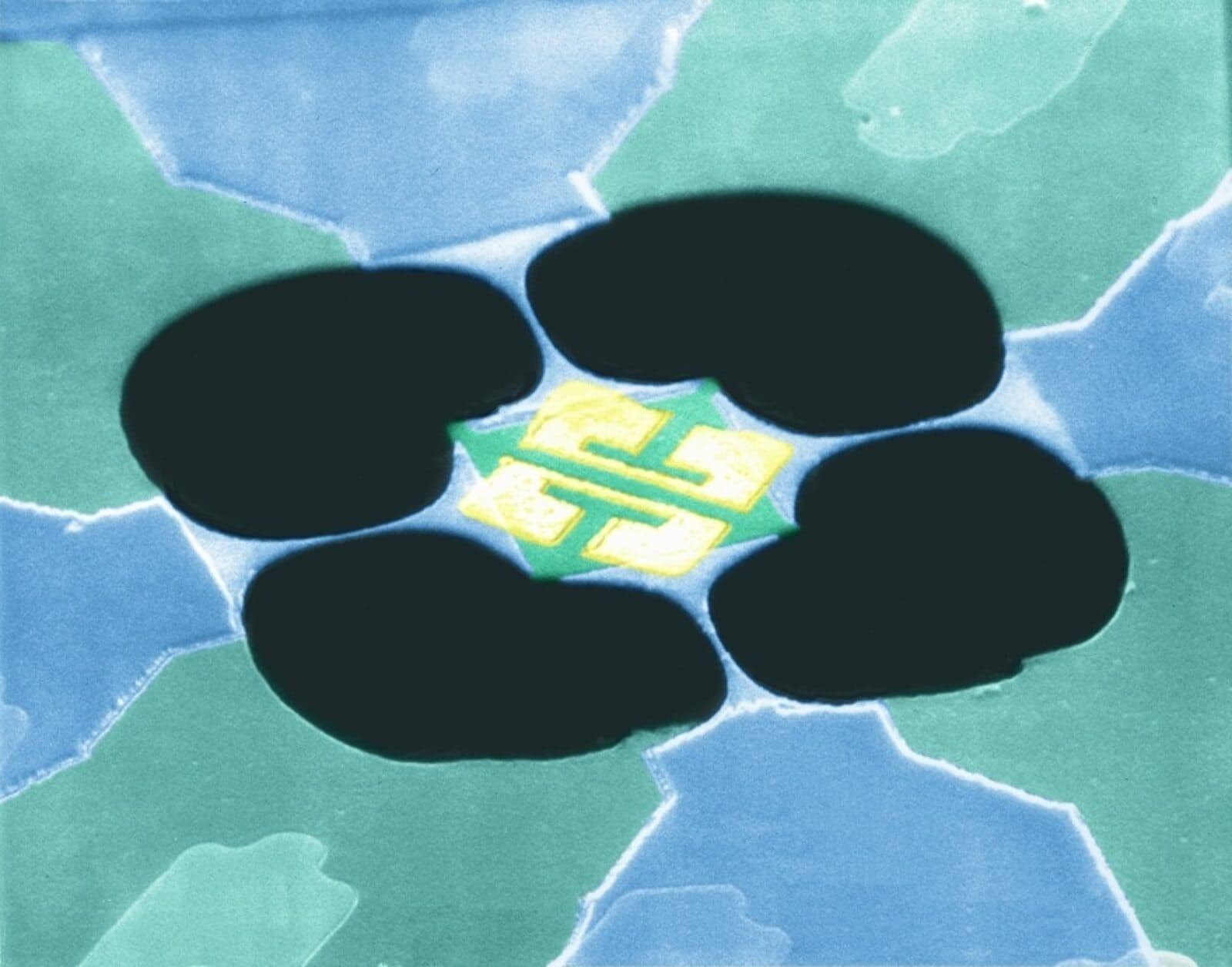Finding Art From Science, Nano Photographs Join Exhibit at Museum of Modern Art

(Originally published by the California Institute of Technology)
April 10, 2008
The Museum of Modern Art is featuring a nanoscale picture by Michael Rouke, professor at the Kavli Nanoscience Institute at the California Institute of Technology, and his research team.
The picture appears in an exhibit titled, "Design and the Elastic Mind." The featured artwork is an electron micrograph, or nanoscale picture, of a device used in discovering the fundamental limit to the amount of heat that can be conducted by objects of atomic dimension. To observe this limit, the researchers used tiny devices with specially patterned features only 300 atoms wide--a few millionths of an inch--to detect phonons, the primary conductors of heat through an atomic lattice.
This work in nanotechnology could eventually have profound implications for the future design of microscopic electronic devices and for the transmission of information.
The exhibit is intended to offer a glimpse into what the future holds by displaying the latest developments in design. It explores the reciprocal relationship between science and design in the contemporary world, showcasing designers' abilities to grasp momentous changes in technology, science, and history, and to convert them into objects that people can understand and use. Objects and projects by teams of designers, scientists, architects, and engineers from all over the world convey concepts ranging from the nanoscale to the scale of the cosmos.
To make the piece, Roukes added color to the originally black-and-white photograph of the device to emphasize the elements. Of the device's design, Roukes noted, "Sometimes when you try to make really intricate, sophisticated structures, a certain amount of design aesthetic and sensibility is required. If you make structures that are impeccably designed, they also often tend to work really well."
The works of Roukes and another colleague at Caltech, Paul Rothemund, will be featured with more than 200 other objects and installations related to science and technology. The contribution from Roukes will be added to the museum's permanent collection.
The exhibit is scheduled to run through May 12. To see Roukes's nanostructure on display, click here.
